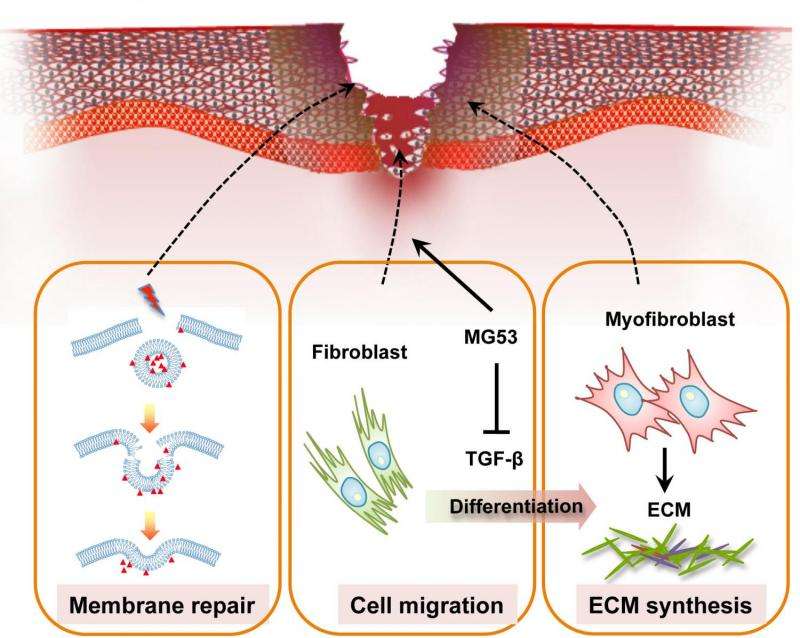Gene identified that helps wound healing

Researchers at Ohio State University have pinpointed a human gene product that helps to regulate wound healing and may control scarring in people recovering from severe injuries and damage to certain internal organs.
The protein, MG53, travels throughout the bloodstream and helps the body fix injuries to the skin, heart, lungs, kidneys and other organs without causing scars. It's a discovery that could help heal open wounds, decrease recovery time after surgery and reduce the spread of infections.
"A massive scar on your skin may look bad, but imagine you have a heart attack and get a scar on your heart—that could be lethal," says Jianjie Ma, a physiologist at Ohio State and co-author of the presentation.
All animals carry this gene, he said, and it's almost identical no matter which species. MG53 fixes the cell and tissue damage that occurs during everyday living. Even simple actions, like walking or typing, will cause injuries to the body. Usually this isn't a problem because MG53 can make repairs before there's any serious harm.
Ma and his team genetically engineered mice without the gene that makes MG53 to see what would happen without its healing capabilities. The experiments showed that the mice lacking MG53 had difficulty recovering from injury, because of their compromised repair capacity; their heart would not function well under stress conditions.
MG53 works in tandem with another protein called TGF Beta, a type of "cytokine" protein that also heals wounds, but the healing process happens so quickly that it causes scars. If you have more TGF Beta in your bloodstream than MG53, you scar easily.
Ma's goal is to develop a therapy that will inhibit TGF Beta and promote MG53. Medical professionals can use the therapy during procedures to promote quick, scarless healing. His next step is to identify a small compound that can do this and eventually test whether it has the desired effect in human trials.
More information: www.abstractsonline.com/Plan/V … 60-a4fa-88b62feb855b


















